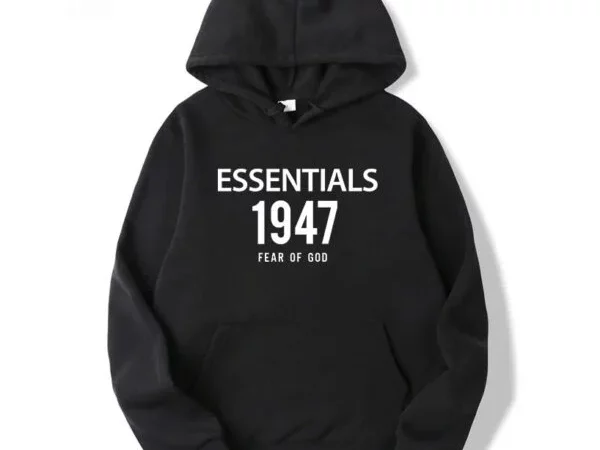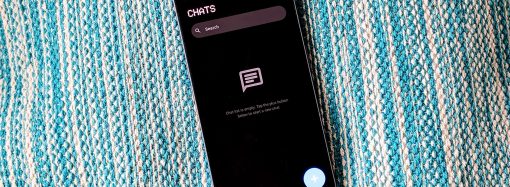Essential clothing has long been the backbone of our wardrobes. These timeless pieces blend comfort, functionality, and style in a way that few other categories can match. But as fashion evolves, so do the expectations of consumers. With sustainability taking center stage and technology pushing boundaries, Essentials clothing faces new challenges and opportunities. This blog
Essential clothing has long been the backbone of our wardrobes. These timeless pieces blend comfort, functionality, and style in a way that few other categories can match. But as fashion evolves, so do the expectations of consumers. With sustainability taking center stage and technology pushing boundaries, Essentials clothing faces new challenges and opportunities. This blog post explores the journey from its humble beginnings to its current role in our ever-changing world of fashion. Join us as we delve into what makes essentials clothing unique, how it’s adapting to modern demands, and why staying true to its roots is more important than ever.
The History of Essentials Clothing
Essentials clothing has roots that stretch back to the early 20th century. Think of the simple yet functional garments worn by workers—durable jeans, plain shirts, and sturdy boots. These were not just clothes; they represented practicality in a rapidly industrializing world.
As fashion evolved, so did essentials. The mid-century introduced iconic staples like the classic white tee and tailored chinos. They became symbols of casual elegance and timeless style.
By the late 20th century, brands began to recognize the significance of essentials as wardrobe foundations. Minimalism gained traction, celebrating simplicity over extravagance.
This evolution allowed basics to transcend trends while maintaining their core function: providing comfort and versatility for everyday life. Essentials clothing is now cherished for its ability to adapt through changing times without losing its identity—a testament to its enduring appeal.
The Rise of Fast Fashion and Its Impact Essentials Clothing
Fast fashion has transformed the clothing industry in profound ways. Brands churn out new styles at breakneck speed, catering to an insatiable consumer demand for variety and trendiness. This rapid production cycle often sidelines quality, favoring quantity over craftsmanship.
Essentials clothing feels the ripple effects of this shift. With consumers drawn to low prices and frequent releases, many struggle to compete on that playing field. The focus on immediacy can overshadow timeless design principles inherent in essentials wear.
Moreover, fast fashion’s environmental toll raises questions about sustainability. As awareness grows regarding waste and ethical practices, consumers are becoming more discerning about their choices—turning towards brands that prioritize longevity and responsibility.
This creates a unique challenge but also an opportunity for essentials clothing lines to redefine their roles within the market landscape—a chance to stand firm against fleeting trends while advocating for lasting value.
The Shift towards Sustainable Fashion Essentials Clothing
The fashion industry is undergoing a significant transformation. Consumers are increasingly aware of the environmental impact of their clothing choices. This awareness has sparked a shift towards sustainable practices in essentials clothing.
Brands are now prioritizing eco-friendly materials and ethical production processes. Organic cotton, recycled polyester, and hemp are becoming popular choices. These materials not only reduce waste but also lessen carbon footprints.
Transparency is another key factor driving this change. Shoppers want to know where their clothes come from and how they’re made. Brands that share their sourcing stories tend to build stronger connections with customers.
Additionally, longevity plays a vital role in sustainability. Essentials clothing focused on durability encourages consumers to invest in pieces that last longer rather than disposable fast fashion items.
As the movement grows, it challenges brands to innovate responsibly while remaining true to what essentials clothing represents: quality and timelessness.
How Essentials Clothing is Adapting to the Changes
Essentials clothing brands are evolving to meet the demands of today’s conscious consumers. They are embracing transparency in their supply chains, providing customers with insight into where and how their clothes are made.
Many companies are shifting focus from trend-driven designs to timeless pieces that promote longevity. This approach not only fosters sustainability but also encourages a more thoughtful consumption pattern among shoppers.
Additionally, collaborations between designers and sustainable textile producers have become common. These partnerships highlight innovative materials that reduce environmental impact while maintaining comfort and style.
Brands are now using technology to enhance the shopping experience as well. Virtual fitting rooms and AI-based recommendations help customers find their perfect fit without leaving home.
As consumer preferences shift, essentials clothing is not just keeping pace; it’s taking the lead in shaping a new future for fashion that values purpose over fleeting trends.
Maintaining Quality and Affordability Essentials Clothing
Maintaining quality while keeping prices accessible is a delicate balance for essentials clothing brands. It requires thoughtful sourcing and production methods that prioritize durability without sacrificing style.
Brands are increasingly focusing on materials that withstand the test of time. This commitment to longevity means consumers can invest in fewer pieces, reducing waste over time.
Affordability doesn’t mean compromising on ethics either. Many companies are exploring fair labor practices, ensuring their workers receive just compensation as part of their supply chain strategy.
Innovative manufacturing techniques also play a role in cost reduction. Streamlined processes enable brands to produce high-quality garments more efficiently, passing savings onto the customer.
Moreover, transparency about pricing helps build trust with consumers who value both quality and ethical practices. As shoppers become more discerning, this openness will be essential for brands aiming to thrive in a competitive landscape.
Innovations in Technology and Design Essentials Clothing
The landscape of Essentials clothing is rapidly evolving with groundbreaking innovations in technology and design. Brands are increasingly leveraging advanced materials that enhance comfort while maintaining durability. Fabrics infused with moisture-wicking properties or even temperature-regulating features are becoming staples.
3D printing technology is making waves, allowing for customized fits that cater to individual preferences. This not only reduces waste but also ensures a perfect silhouette every time.
Sustainable practices are being integrated into the design process as well. Designers are incorporating recycled materials and eco-friendly dyes, ensuring fashion-forward choices don’t compromise the planet’s health.
Smart textiles equipped with wearable tech offer exciting prospects too. Imagine clothing that can track your fitness or adjust its insulation based on weather conditions—this isn’t just future talk; it’s happening now.
These innovations reflect a commitment to meeting modern needs while embracing creativity and responsibility in essentials clothing.
Conclusion: Staying True to Their Core Values while Embracing the Future
Essentials clothing has always been about more than just fabric and seams. It’s a reflection of our needs, lifestyle, and values. As the fashion landscape continues to evolve, brands committed to essentials must navigate through changing trends while staying rooted in their core principles.
Sustainability is no longer an option; it’s a necessity. Essentials clothing brands are recognizing this shift and responding with innovative practices that respect both people and the planet. Whether it’s using eco-friendly materials or adopting ethical manufacturing processes, there’s a clear movement towards responsible fashion.
At the same time, affordability remains crucial. Consumers want quality without breaking the bank. The challenge lies in balancing high standards with cost-effectiveness—a task that many brands are approaching creatively.
Technology also plays a significant role in shaping the future of essentials clothing. Innovations such as 3D printing and AI-driven design can streamline production while minimizing waste. These advancements not only enhance creativity but also ensure that essential pieces remain relevant in style and function.
















